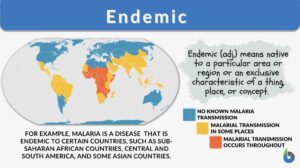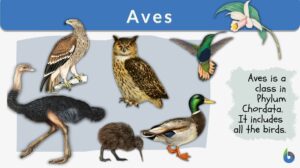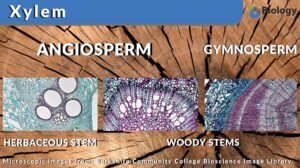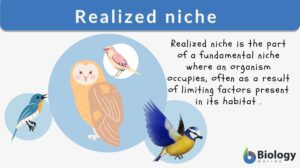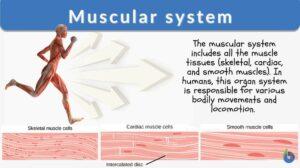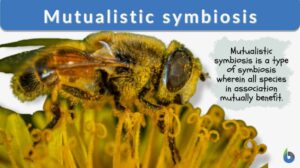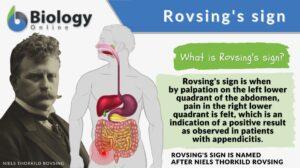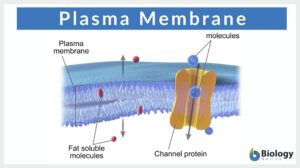Search Results for: narrow
Catarrhine
Definition noun, plural: catarrhines Any of the primates belonging to the parvorder Catarrhini, characterized by having the... Read More
Protoxylem
Definition noun The first xylem to develop from the procambium, and characterized by narrow tracheary elements with annular,... Read More
Allopatric speciation
We can define speciation as a process by which the novel genetically independent group of organisms are formed through the... Read More
Capillary action
Definition noun The movement of a liquid, e.g. water molecules, through a narrow space as a result of cohesion, adhesion,... Read More
Perisinusoidal space
Definition noun The plasma-filled extravascular space in the liver, between a hepatocyte and a liver sinusoid Supplement The... Read More
Pinocytosis
Pinocytosis Definition What is pinocytosis? Pinocytosis is the ingestion of extracellular fluids, i.e. the fluid... Read More
Physiological adaptation
If we look over evolutionary history, we find that it’s neither the most genius and intelligent nor the strongest and the... Read More
Plica caecalis vascularis
plica caecalis vascularis --> vascular fold of the caecum (Science: anatomy) A peritoneal fold that arches over a branch... Read More
Realized niche
What is a niche? A niche can be defined as the means by which a species or an individual interacts with its environment. In... Read More
Antecubital fossa
Antecubital Fossa Definition The antecubital fossa or the cubital fossa is the triangular-shaped hollow depression between... Read More
Dichotomous
Several English words are widely used across different fields of Science. One such term is dichotomous. We often use this... Read More
Book lungs
Book Lungs Definition Lungs are known as the organs that help organisms breathe. When we think of lungs, we think of the... Read More
Muscular system
Muscular System Definition What is the muscular system? The muscular system is a system that includes muscle cells and... Read More
Petrotympanic fissure
Definition noun A narrow transverse slit dividing the mandibular fossa of the temporal bone into tympanic and petrous... Read More
Mutualistic symbiosis
Mutualistic Symbiosis Definition In order to understand what a mutualistic symbiotic relationship means, we will break down... Read More
Ethmoidal labyrinth
Definition noun, plural: ethmoidal labyrinths Either of the paired lateral masses of the ethmoid bone, consisting of the... Read More
Atrioventricular sulcus
Definition noun (anatomy) A sulcus or a groove on the outer surface of the heart marking the division between the atria and... Read More
Erlenmeyer flask
Erlenmeyer flask (Science: apparatus) a piece of chemistry laboratory equipment, a container often made of glass, which has... Read More
Protophloem
Definition noun, plural: protophloems The first phloem to develop from the procambium Supplement The phloem is a vascular... Read More
Rovsings sign
Rovsing's Sign Definition Rovsing's sign is when palpation on the left lower quadrant of the abdomen results in pain in the... Read More
Internal auditory canal
Definition noun A short, narrow passageway through the temporal bone of the skull where the vestibular nerve and cochlear... Read More
Plasma membrane
Do all cells have a plasma (or cell) membrane? Yes, all cells have a biological membrane that separates the protoplasm from... Read More
New Zealand’s Unique Flora
By: Maria Victoria Gonzaga In the previous lesson, we've come to know some of the most fascinating endemic... Read More
Effect of Chemicals on Growth & Development in Organisms
Plants Plants require a large number of elements to function properly, mainly carbon, oxygen, and hydrogen, essentially... Read More
Regulation of Organic Metabolism, Growth and Energy Balance
Organic Metabolism Events of Absorptive and Post-absorptive States. The absorptive state is the period during which... Read More
Circulation
Blood Blood is composed of a liquid, plasma, and blood cells such as erythrocytes (red blood cells,) leukocytes (white... Read More
Phloem sclerenchyma
Definition noun The sclerenchyma cells in the phloem of many vascular plants, and is responsible for providing mechanical... Read More
Xylem fiber
Definition noun, plural: xylem fibers Any of the fibers made up of dead sclerenchyma cells in between the xylem vessels... Read More


